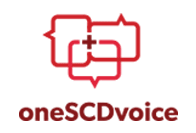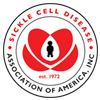Trusted Resources: Evidence & Education
Scientific literature and patient education texts
Red blood cell transfusions during sickle cell anemia vaso-occlusive crises: a report from the magnesium in crisis (MAGiC) study
source: Transfusion
year: 2017
authors: Hulbert ML, Panepinto JA, Scott JP, Liem RI, Cook LJ, Simmons T, Brousseau DC
summary/abstract:BACKGROUND:
Little is known about red blood cell (RBC) transfusion practices for children hospitalized for a sickle cell vaso-occlusive pain crisis (VOC). We hypothesized that transfusion would be associated with the development of acute chest syndrome (ACS), lower hemoglobin (Hb) concentration, and lack of hydroxyurea therapy.
STUDY DESIGN AND METHODS:
This is a secondary analysis of all children admitted for a sickle cell pain crisis enrolled in the Magnesium in Crisis (MAGiC) randomized trial; all had HbSS or S-β0 thalassemia. ACS development and transfusion administration were prospectively collected during the parent trial. All Hb values during the hospitalization were recorded, as was parent report of child receiving hydroxyurea. Relative risks (RRs) of transfusion were compared between groups.
RESULTS:
Of 204 enrolled children, 40 (19.6%) received a transfusion. Of the 30 children who developed ACS, 22 (73.3%) received transfusions compared to 18 of 174 (10.3%) without ACS: the RR of transfusion in children with ACS was 7.1 (95% confidence interval [CI], 4.4-11.5). Among those without ACS, the lowest Hb was most strongly associated with transfusions: RR was 3.1 (95% CI 2.0 – 4.7) for each 1 g/dL decrease in lowest Hb. In a binary recursive partitioning model for those without ACS, a lowest recorded Hb level of less than 6.3 g/dL was significantly associated with transfusion during admission (p < 0.01). Hydroxyurea use was not associated with transfusions in any analysis.
CONCLUSION:
ACS increased the RR of transfusion in children hospitalized for VOC sevenfold. In children without ACS, transfusion was associated with lowest Hb concentration, particularly Hb concentration of less than 6.3 g/dL.
DOI: 10.1111/trf.14155
read more full text
Related Content
-
Optimizing Hydroxyurea Therapy for Sickle Cell AnemiaHydroxyurea has proven efficacy in numer...
-
Vitamin D supplementation for sickle cell diseaseBACKGROUND: Sickle cell disease is a ge...
-
How sickled red blood cells stick to blood vesselsOne of the most common complications o...
-
Advances in the Treatment of Sickle Cell Disease: L-Glutamine, Crizanlizumab & Gene Therapyhttps://www.youtube.com/watch?v=wkm4axJ3...
-
sicklecell101Pins from sicklecell101 on Pinterest...
-
Gut Microbiome Translates Stress Into Sickle Cell CrisesA new study shows how chronic psychologi...
-
Sickle Cell Treatment ‘Life-Changing’ for Brockton BrothersEmmanuel “Manny” Johnson, 21, of Bro...
To improve your experience on this site, we use cookies. This includes cookies essential for the basic functioning of our website, cookies for analytics purposes, and cookies enabling us to personalize site content. By clicking on 'Accept' or any content on this site, you agree that cookies can be placed. You may adjust your browser's cookie settings to suit your preferences. More Information
The cookie settings on this website are set to "allow cookies" to give you the best browsing experience possible. If you continue to use this website without changing your cookie settings or you click "Accept" below then you are consenting to this.




 +myBinder
+myBinder
